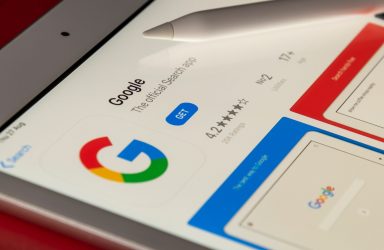Estimated Reading Time [est_time]
Having worked on a vast number of B2B projects in my time, one of the biggest challenges is reporting on sales, revenue and ROI.
With digital marketing being one of the most measurable and transparent channels for promoting your business, it would seem that tracking sales should be straight forward. Unfortunately that isn’t always the case, so let’s break down some processes which may help.
Source tracking through CRM
First things first, are you tracking anything on your site? I hope the answer is yes but I have been surprised before.
If you are already tracking often it will be likely be a ‘phase one’ goal e.g. downloaded a document, filled in a contact form, applied for a quote. With all of these goals it’s likely you are not tracking an associated value. This can be tracked and reported but it will take some implementation.
When enquiry data is passed through to your CRM, how is it then tracked? Are you maintaining the referring source through the CRM process?
E.g.
We should therefore be able to capture a number of attributes:
- Source
- Campaign
- Keyword
- Device
- plus more
By doing this you can monitor the journey of the lead within your CRM and associate it back to the initial source and even keyword that influenced the lead.
Long lead times
One of the most difficult aspects of B2B sales tracking is the extremely long lead time. If you are selling to large or enterprise businesses, even the approval process of a new supplier can take months, so the journey from initial enquiry to sale can be years. Then take into account that over that time there may be a number of marketing touch points. I.e.
A demo or intro is arranged and the sales process begins. But….
But it doesn’t end there.
The initial display ad which triggered the sale now seems like a distant memory! However, by tracking over time you should be able to tie the clicks to leads, leads to sales, and the sales to revenue. It’s just gonna take some time. Unfortunately, then trying to optimise that channel of marketing becomes irrelevant as you are a year on and many other factors could have changed.
You therefore need to choose your success metric and optimise based on that, be that brand exposure, interaction, first point of enquiry or qualified business lead.
Off site tracking
The biggest headache and gap in the measurability of goals and sales is off site activity. Whether that be PR, events and exhibitions or even traditional press ads. From a very transparent tracking system from digital advertising, visibility can be lost from offline marketing.
There is no simple fix for this, the main goal would be to try and get the target to re-engage. Get them tweeting specific hashtags at events – this demonstrates they have seen you. QR codes can be used to offer incentives or share information, digital assets rather than paper leaflets can be used and tracked, whatever can be done to get that prospective client into the CRM funnel – plan it!
Crunching data
It sounds simple, but often many of the answers for B2B’s and lead generation businesses comes down to good old fashioned data crunching. Spreadsheets, integration plugins, reporting tools, dashboards etc.. It may sound like death by data but if you get it right you can end up with a bespoke integrated ROI report. Tracking initial interaction ad cost, returning user ad costs and final conversion costs to sale, will give you a really good grip on how much you should be investing and into which blend of marketing channels.
Technology limitations
All of the above is great, but some of us have very little control over the website or tracking systems we have in place. This is going to be a challenge so I recommend focusing on the easy wins. What can you do on the most simple level to track success metrics? That could be the page view of a thank you page. This can still be reverse engineered as a metric to estimate sales value per form submission. If you know how many sales per month and how many forms you get in total, you can work back to see how many clicks are driving a form application and how much each form is costing. With a few calculations, you can figure out an average value per form. It may not be of the highest accuracy but it will help steer where you need to be spending your budgets to achieve results.
All in all, it can be a challenge and sometimes the set up and technology within your organisation may not be there yet. That doesn’t mean you stop! It means you find ways to get buy in from stakeholders and peers to put a focus on measurability.
If you could show them a way of understanding what marketing investment is actually driving sales and revenue, why would you not get buy in?
For help or advice on tracking your B2B projects through to sales, get in touch.







